Becoming Sustainable in a Water-Intensive Business
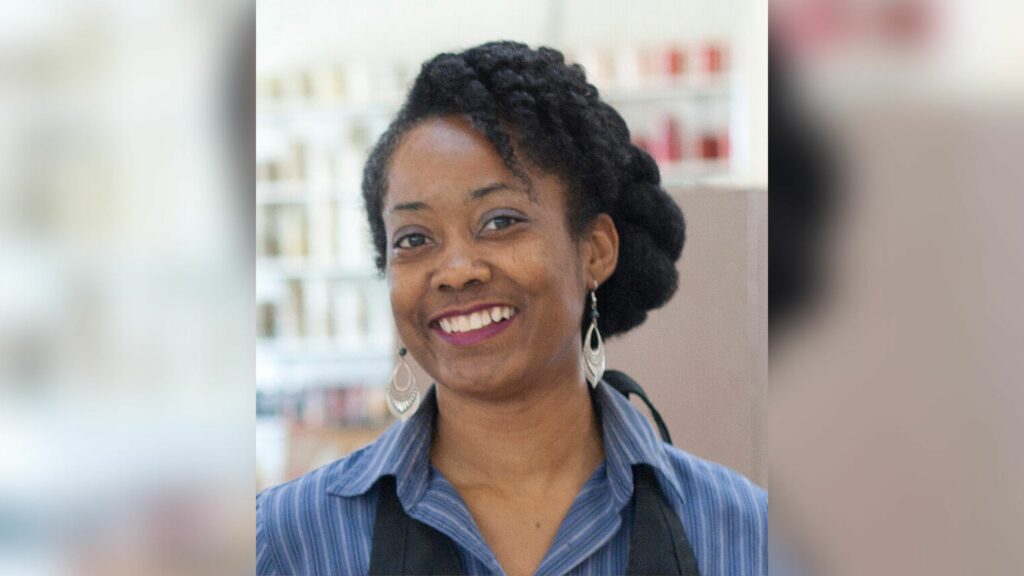
In 2013, industrial designer Shayla Johnson launched Scarlet Crane Creations and began selling her stationery and other prints at The Rust Belt Market in Ferndale. She quickly realized her disdain for using paper as a medium due to the waste it created. Pivoting to natural and organic fabrics and eco-friendly inks, she created her Detroit Collection which includes home décor and accessories made from original and sustainable hand-printed fabrics. Over the next eleven years, she progressed her sustainability practices and is now revamping her systems, equipment, and space toward the preservation of water and the support of using organic dyes and materials. SBN Detroit interviewed Johnson about the impetus behind her vision, the challenges in executing sustainable practices in the print and textile industry, and the solutions she is employing. Q: What is the company’s approach to sustainability? A: Sustainability is always a thread in my thinking and I’m always looking for ways to do better. I’ve progressed from paper to fabric to more responsible fabric and continue this evolution. I use all organic and eco-friendly inks. We are also focused on a closed-loop system that allows us to recycle the water we use. Q: What inspired you to focus on your water usage, and what are the challenges in the printing/textile industry that you face regarding this? A: At one point along the way I measured how much water I was using in one print session, and it was ten gallons. To put this in perspective, that involved dying about ten to 15 yards of fabric. I saw this as completely problematic, watching all that water go down the drain. And began to think exponentially – what does this look like across the country and globe? I have come to find out that the global textile industry utilizes 1.3 trillion gallons of water annually – enough to fill 2 million Olympic-sized pools. Q: What did you do next? A: Water-based inks have always been my focus. I knew that going forward when I dump the waste, I needed to make sure it was filtered and disposed of properly and the water was reused. I began working with Centrepolis, and they connected me to Dr. Refael Aharon, an expert in textile recycling. We worked for four months studying my processes and developed a system that he outlined for me including recommendations and the equipment and type of space I will need. Q: You recently won a $10K grant from Michigan Women Forward to expand your space to accommodate this. What has this involved? A: That’s right. I am part of the Motor City Match program now and am in the development track, where I’m getting help to further plan the space and secure a location. Q: You utilize fabrics that are sourced in the U.S. and the production is focused locally in Detroit. What challenges come with this? A: The companies we order from are all American-based companies, and it is all organic cotton and linens, etc. But there are very few mills in the U.S. these days, so some of the raw goods are unfortunately imported. The companies we buy from all have a commitment to sustainability, and I try to purchase as much fabric as I can locally. Our bread-and-butter product – tea towels – is from a fabric company in Michigan. Q: What are the challenges in working with organic inks and dyes? A: Using natural dyes requires a different process that is more labor-intensive and therefore takes longer. These dyes are made from plants and proteins that come from cactuses and other natural sources and can be more expensive to source. Since they are all-natural, they don’t last as long. We have to use them faster and that can be tricky to manage. So, the biggest barrier becomes being able to produce in a way that still allows us to sell the products at a reasonable price. However, my clients appreciate and seek out these products purposefully, choosing not to purchase ink that requires solvents and materials made of synthetics, etc. So, they are not surprised by higher price points. This model aligns with slow fashion – being thoughtful and intentional about the outcome even if that takes longer. I believe in having an item that will last longer and that won’t end up in a landfill. Q: Are there additional sustainability practices you deploy? A: Some of our items are created from upcycled materials like jeans and pre-owned items. People also like these because they are one-of-a-kind. Q: In terms of sustainability – does your location in Detroit come into play? A: Yes. Because there has been a resurgence of interest around Detroit and people are looking to focus efforts in this area, that has helped. People want to support us. My assistant is a College for Creative Studies graduate, and I want to continue to train students locally who have a passion for fibers and sustainability around textiles. I want to keep all of that within the Detroit ecosystem. Q: What are the barriers you have faced operating sustainably as a smaller company? A: The inability to work as quickly as we’d like. Also, the dyes I mentioned. Some only last two to three weeks, so we try to print as much as we can in a few sessions before the vat goes bad. Organic materials can be unstable. You constantly must keep them fresh. Q: What is your advice to other design/textile companies like yours when it comes to sourcing locally to help the economy and be more sustainable? A: I believe in collaboration, especially with local schools and universities. I think sticking to a local pipeline of talent is important. I work as an adjunct at CCS, and it’s really been useful to me to bounce ideas off of others. My advice is to never work in a silo – build a community. To that end, I belong to a couple of community printmakers in the area and have been deeply
A Look at EGLE’s Materials Waste Management Division
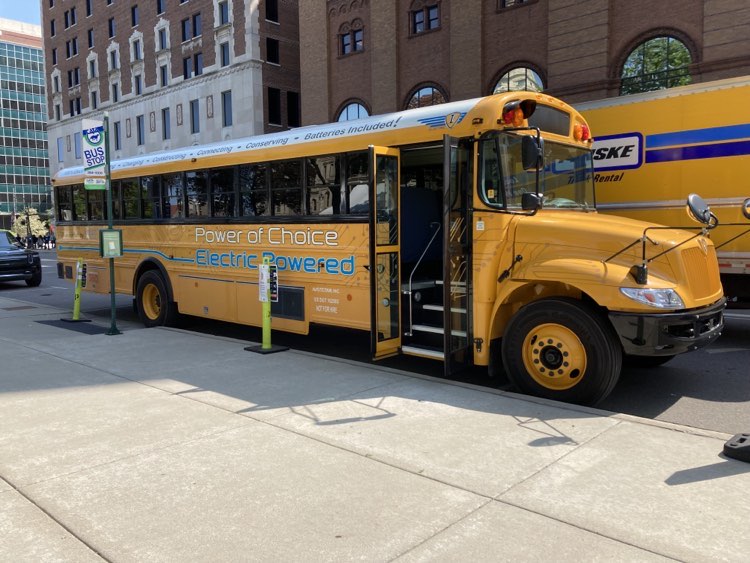
The Materials Management Division (MMD) of the Michigan Department of Environment, Great Lakes, and Energy (EGLE) oversees solid and hazardous waste programs, radioactive materials activities, a radon awareness program, recycling, and energy programs. We interviewed the director of the division, Elizabeth Browne, to get some insights. Q: How do you think energy efficiency, recycling, and pollution prevention are interconnected when it comes to fostering sustainability in Southeast Michigan? A: I have always felt you can’t have any without the others, and they are all key to having a sustainable system. Maybe it’s my biologist background. Recycling facilitates energy efficiency since it translates to diverting items from landfills. If you have a good system, you are reusing and recycling materials nearby, you save energy by not transporting material across state lines. When we look at energy efficiency, it works the same way. If we decrease the effort and resources put into heating, cooling, water usage, and transportation systems by becoming more efficient, we have more resources to allocate elsewhere. And isn’t that the very heart and definition of sustainability? Q: How do environmental justice and underrepresented communities factor into these efforts in Southeast Michigan? A: They factor in highly. There are federal funding requirements to help regulate this. The federal Justice 40 program deems that 40% of grant funds be used in underrepresented communities. Even before that, this was a focus for us. If you look at any of our requests for proposals, we pay special attention to projects coming from underrepresented communities – places where the community’s ability to be more sustainable has been stressed. We are always trying to level the playing field. Q: You work with state and federal partners, entrepreneurs, companies, organizations, and communities to reduce Michigan’s reliance on nonrenewable energy. Can you tell us more about this work? A: We work with federal partners in seeking every grant opportunity that we feel we have a nexus with. We work with companies and organizations through the Retired Engineers, Scientists, Technicians, Administrators, Researchers, and Teachers (RESTART) program. This is a group of retired professionals who work with entities to identify where they have energy issues or where renewable energy options may be a benefit. We do energy audits for houses of worship, schools, and municipal buildings. In many cases, these buildings are older and not efficient, so we offer ideas on how to improve efficiency and look at renewable options. This helps them save financial resources that they can then allocate elsewhere. We have received grant money through the Charge Up Michigan Program to install fast chargers in communities. Within this program, the cost of charger installation is divided amongst the location owner, the utility provider, and EGLE. This allows us to install more chargers, and it helps the utilities get closer to their energy efficiency goals and benefits the property owner or business. We have worked with communities to replace diesel- and gas-powered vehicles with electric ones, including Willow Run Airport and the City of Detroit. In Detroit, we replaced diesel-powered garbage trucks with EVs. We work heavily with NextCycle and the Centropolis Accelerator program at Lawrence Technological University. These are both programs to support businesses in their early stages. NextCycle is geared toward recycling activities, and the Centropolis Accelerator focuses on clean technology and the circular economy. Q: What are your biggest challenges in materials management? A: The thing that keeps me up at night is navigating grant programs. There is this huge influx of federal money, but there are a lot of checks and balances, and trying to manage the funding appropriately is a challenge. There is a lot of hurry-up-and-wait involved. We have a phenomenal team, and I don’t want to break their backs as they work to move the money out to recipients. Q: What are your highest priorities? A: Moving as much of the funding to those who need it and doing it in a way that is equitable and fair and hits the highest needs. Sometimes we make decisions that aren’t flashy, but the impact they have on that community is significant. A small community getting a few solar panels to help power their community building so the kids have someplace to go after school is a good example. We try to disburse the money in a way that supports as many communities and people as possible. Q: What does the future look like? A: I think it keeps getting brighter. The Michigan Legislature recently passed an eight-bill package that updates solid waste laws and will ensure we have sufficient landfill capacity. We just held our Virtual Michigan Materials Management Conference and had almost 600 people from 11 states represented. Getting EV chargers out across the state and seeing more and more interest in communities in terms of electrification is good progress. There is so much potential for economic growth in the energy and recycling fields. It’s astronomical. This excites me. Every day, I see people and companies that are looking for support and direction on becoming more sustainable. More and more companies understand the need to be sustainable because the public is demanding it, and it’s also for their own good. I encourage everyone to reach out to us. People interested in any EGLE grant programs can go to Michigan.gov\EGLE and search for “grants and financing.” For more information about all things Materials Management Division, our web pages can be found at Michigan.gov/EGLE/about/organization/materials-management. Be sure to subscribe to our newsletter for regular updates on sustainable business practices in and around Detroit.
Working to Sequester Carbon Within Urban Wood
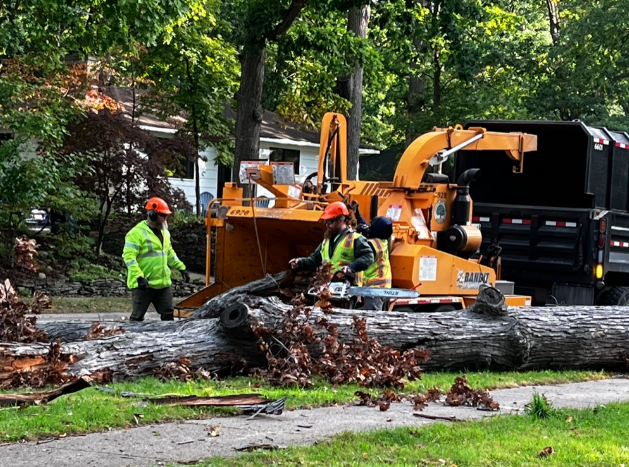
According to Tiffany Giacobazzi, Ann Arbor urban forestry & natural resources planning coordinator the Ann Arbor Forestry Department, the city of Ann Arbor loses about 600 trees per year. This reduces its carbon storage capacity dramatically. Much of the loss sits within furniture-grade urban lumber, meaning the trees can be repurposed for furniture or other long-lived urban wood goods that aid in sequestering carbon, versus being used for mulch or firewood or being diverted to landfills. Ann Arbor has partnered with Urban Ashes to implement its Circular UrbanWood Triconomy™ (CUT Model™). This model is meant to ensure that logs are put to their highest and best use to sequester as much carbon as possible. SBN Detroit spoke with Paul Hickman, Urban Ashes founder, CEO, and principal designer, and Tiffany Giacobazzi, Ann Arbor urban forestry & natural resources planning coordinator, to find out more. Q: What is Urban Ashes, and how did this program with Ann Arbor come to be? Hickman: I will provide a little background here for context because Urban Ashes has gone through a bit of an evolution. Initially, it started with a major career change for me by taking a job in California with one of the first sustainable lumber companies in the world. I eventually moved back to Michigan and started the original Urban Wood Project with three others in the early 2000s in response to the infestation of the emerald ash borer to help utilize trees beyond mulch, which was the most common response for the disposal of ash trees then and now. That was the impetus, but it immediately expanded to include all fallen urban trees and into Urban Ashes. Urban Ashes grew to sell to over 250 retail partners across 43 states over ten years, repurposing hundreds of tons of lumber into picture frames, furniture, and other items. From the beginning, our focus was also to work with formerly incarcerated individuals as a labor force, and that remains a strong component of the Urban Ashes business model today. Over time, the lack of wraparound (support) services (for workers) took a heavy toll, and eventually, we shifted entirely, shut down our manufacturing, and decided we needed to focus on building the infrastructure to develop the supply chain more thoroughly and consistently and grow the markets for utilization as well as develop the critically needed wraparound services needed for our target labor pool. So, we partnered with NextCycle Michigan and went through their FLOWS track which led to an EGLE grant. Then came the vision for the Circular UrbanWood Triconomy™. We were fortunate enough to work with the University of Michigan graduate students for 18 months to validate the viability of the model, and beginning in 2021, we have piloted it with the city of Ann Arbor. Q: How and why did the city of Ann Arbor come to change the way it processes trees and work with Urban Ashes? Giacobazzi: As the city has shifted with its sustainability goals and A2Zero plan, we started to look at how we could divert more out of the waste stream. We wanted to achieve the highest best use for materials that come out of the urban forest. So, we connected with Urban Ashes and partnered on this project. I have support all up and down the line from city administration which is really important. We are fundamentally changing the way we are dealing with urban wood and our urban forest so we must all be in support of this new process. Q: What does this program involve? Hickman: For years, all fallen urban trees in Ann Arbor (as is the case with most cities) were used for mulch or firewood. Accordingly, Ann Arbor loses approximately 1,111 metric tons of carbon every year and we were able to show them that by implementing the CUT Model™, we can capture upwards of 700 metric tons of that 1,111 and keep it in use and sequestered. The process involves cutting the trees down in a way that holds the most carbon and is best suited for the mills. The process also involves setting up the mills, facilities, contracts, and tracking methods, and then implementing everything. So, that is the work that Urban Ashes has been doing. Q: What do you, as the Urban Forestry and Natural Resources Planner, hope to achieve through Circular UrbanWood Triconomy™? Giacobazzi: I want to make sure the trees and lumber that have to come out in Ann Arbor go to the best use possible. I want it diverted from the waste stream and we are looking to lock up the carbon for as long as possible. We put such time and effort and thought into the development, care, and maintenance of our urban forest, it seems that the next natural best step is to complete the lifecycle of these trees and extend the usefulness of the trees once they die or have to come out. Q: In what ways has the lumber from Ann Arbor been repurposed? Hickman: Typically, the lumber goes to mills to be cut into slabs or dimensional lumber, kiln-dried, and processed, and then is sold as raw lumber to manufacturing or local woodworkers. The wood is then used for items such as furniture, frames, ceiling/wall cladding, flooring, household trim packages, decorative pieces, and more. Q: What other cities are you working with? Hickman: We are farthest along with Ann Arbor. But we are also working with Grand Rapids and are in talks with Detroit, Lansing, Traverse City, and several others outside of Michigan. In terms of businesses, we are working with a startup through Centrepolis called Lily Pad Labs out of Holland, Mich., to provide urban black locust for decking and tables for their autonomous electric boats. We are also working in conjunction with Centrepolis to help bring Daika Wood’s game-changing urban wood waste processes and products to Michigan. These are a few of the things we have happening at the moment. Q; In what ways do you think Urban
The Inflation Reduction Act – How Small and Medium-Sized Businesses Can Benefit
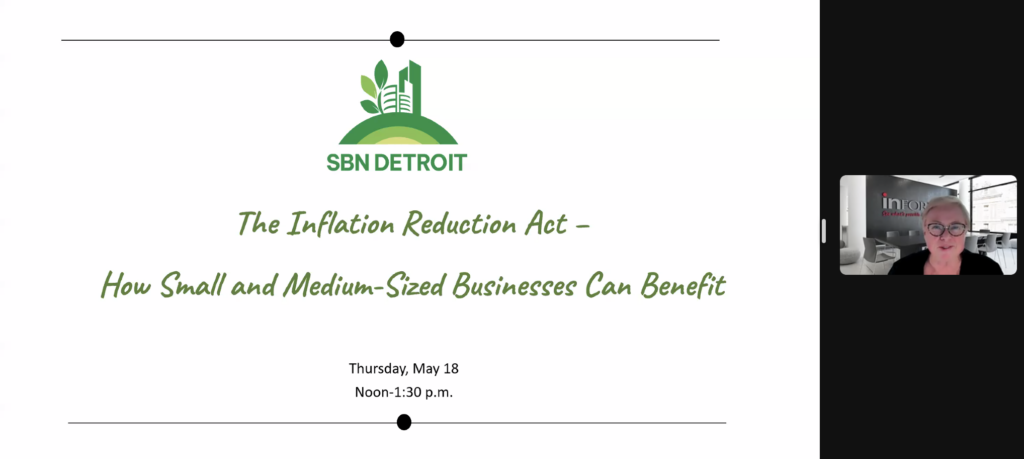
The Inflation Reduction Act of 2022 includes $500 billion in new spending and tax breaks targeted toward climate change, clean energy, training, and workforce development, the development of clean infrastructure, and more. It puts the U.S. on a path to 40% emissions reduction by 2030 with these desired impacts: Lower energy costs Increased energy security Investments in decarbonizing all sectors Focused investments in disadvantaged communities Support for resilient rural communities Additionally, the legislation act offers businesses and entrepreneurs unprecedented opportunities but identifying these opportunities and navigating how to capitalize on them can be daunting. To help small- and medium-sized businesses understand the act, SBN Detroit held a virtual event on May 18 featuring Joel Howrani Heeres, director, Public Sector Consultants; Jerry Davis, professor, Ross School of Business; Dan Radomski, executive director, Centrepolis Accelerator at Lawrence Tech University, and Kimberly Hill Knott, president and CEO, Future Insight Consulting. Each speaker presented according to their areas of expertise, followed by a Q & A. We’ve shared some of the speakers’ points below. You can view the full event here. A significant portion of IRA rebates goes to homeowners, creating an opportunity for contractors to provide energy audits, electrification upgrades, and more. The funds allow for roughly 5,000 houses to take advantage of rebates. – Howrani There are five components involved in creating an enterprise – capital, labor, organization, supply, and distribution. The IRA creates opportunities within each of these components. – Davis When it comes to cleantech funding, it’s important to understand what stage of development you are in and how that applies to different funding opportunities. Generally, funding comes in when technologies are mature and ready for deployment. But there are different opportunities within the different stages. – Radomski As we transition to the Infrastructure Investment and Jobs Act (IIJA) there will be more investments in infrastructure, and the money will flow through state agencies and departments. – Radomski The key to being e successful with IRA funding is collaboration. Addressing climate change is multifaceted. For example, residential electrification dollars are coming. but many houses are not necessarily ready to replace fossil fuel sources with electricity. So, there is an opportunity to partner with community action agencies that manage funds for home repair to get homeowners ready. For example, the community action agency essentially does intake and prep, and a private contractor does the electrification work to use the rebates. – Howrani There are new opportunities up and down the supply chain from technicians to engineers to manufacturing. This is going to take an effort in workforce development by universities, community colleges, and manufacturers themselves. We need education in all of these areas which will lead to jobs and wealth creation. – Radomski My students surveyed local small businesses regarding their priorities around green energy. The overwhelming response was reliability. For these businesses, extended power outages could be catastrophic. This presents an opportunity – how do we solve this? – Davis Understanding that the IRA is not easily interpreted, I had my students translate parts of it into easy-to-understand How to Guides and also sample business models which can be found at Greenbiztransition.com View the full presentation and Q&A here. Be sure to subscribe to our newsletter for regular updates on sustainable business practices in and around Detroit.
Creating a Closed-Loop Supply Chain for Recycling in Michigan
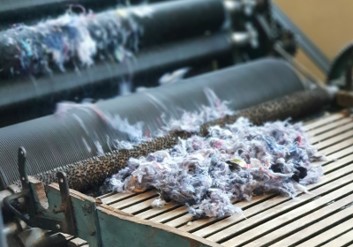
The Department of Environment, Great Lakes and Energy (EGLE) is working to grow a Michigan circular economy through recycling. Matt Flechter, recycling market development specialist at EGLE, says recycling programs in Michigan involve building a strong supply chain so the valuable commodities that businesses need make their way from the curb to new products. SBN Detroit spoke to Flechter to find out more. Q: Tell me about your role when it comes to recycling. A: For the past 22 years, I’ve been working toward the goal of helping Michigan regain a leadership position in recycling. I work for the Department of Environment, Great Lakes and Energy (EGLE), and my role is focused on recycling market development. This essentially means making sure there is a process in place for the materials that are put into dumpsters by manufacturers and businesses to make their way into sorted waste materials and then into reproduction, ultimately to make new products that are developed in Michigan. This sounds straightforward in its most basic terms, but recycling is a complex system. It takes motivated individuals to know that there is a better use for the materials that are being disposed of. It takes investing in the collection and hauling of materials. It takes reproduction and remanufacturing, and it takes having a market: end users that then purchase and/or use those materials. The last piece of this complex puzzle is ensuring that there are entities in place for each part of the cycle – and that they are connected – creating a fully functional closed-loop supply chain. Q: What are the biggest challenges? A: Recycling markets are diverse. Materials consist of plastic, paper, organics, and glass, and each has its own supply chain. Some have ready-made markets. Corrugated cardboard is an example here, as it can be bailed and sent to paper manufacturers for reuse. Finding markets to create a demand pull for a material like glass is more challenging. Another challenge is the geographic location of the manufacturers involved in the reproduction because transportation of materials can get costly. Also, many of these end markets are startups, and they need support and innovation, and new uses to create demand-pull. Good examples of these are Pivot Materials and NexTiles. For all of this to work, and for manufacturers and businesses to move from the use of non-recycled materials to recycled materials, there must be a consistent supply of these materials. So, the supply chains we are building need to be closed-loop, local, and robust. Q: How do EGLE and NextCycle Help? A: To address each part of the cycle I described, EGLE created NextCycle, and we collaborate with partners such as Centrepolis, Michigan Recycling Coalition, and Resource Recycling Systems, a global consultancy. We have made amazing strides in the last couple of years – with momentum coming from our NextCycle initiative. NextCycle is an incubator and accelerator and is designed to connect entrepreneurs, companies, organizations, and communities to technical support, financial resources, and capacity building for recycling, recovery, and reuse initiatives. If someone comes to us with a new idea, that company first applies to one of the NextCycle challenge tracks. There are five challenge tracks: Roads, Public Sector, Recycling Supply Chain Solutions, Organics Solutions, New Innovations, and Technology. They are then selected into a cohort or a team and we provide several areas of support, including technical assistance, research data, business development, funding opportunities, an extensive network, customized mentorship, and more to help get the idea to the next level. We have worked with over 60 teams, and it’s an exciting time when it comes to recycling. Q: How so? A: We are seeing a resurgence and interest in making sure Michigan has a strong circular economy, primarily because there are new people at the table focused on climate goals and deciding how they are going to tell their businesses’ sustainability story. Historically waste and recycling have been seen as an afterthought – we have a problem and now need to fix it. Businesses today are starting to look at fixing the problem before it’s created, which is a big paradigm shift that’s exciting. There is a lot of growth in this sector and there are threads of it in every business in Southeast Michigan. Every business is faced with choices and options to address the triple bottom line. This is also creating new business opportunities. There are broader-based coalitions working to expand recycling access, such as the Polypropylene Coalition and the Food Service Packaging Institute. There are also new people looking to fund. No longer is it just the government growing the recycling system. This increased participation and the growth of the end markets are exactly what is needed for success. Q: What Southeast Michigan businesses are you working with? A: I can give a few examples here. On the collection side, Pink Elephant Events provides zero-waste event services and waste diversion to the events industry, businesses, and nonprofits in Southeastern Michigan. They collect products for reuse, then calculate the impact, so that the business having the event can show a tangible “win’ toward their sustainability goals. An example on the processing side is Glacier. This California-based company identified Michigan as the best place to invest in deploying its innovative robotics technology. We connected them to two materials recycling facilities (MRF)s in Michigan to do so – SOCRRA in Troy and RRRASOC in Southfield – and provided grant funding. An example of end-use is Industrial Sewing and Innovation Center (ISAIC). We helped them to secure funding for equipment to more efficiently turn waste textiles into new products. We are starting to see a truly circular economy forming. The new businesses are feeding off of each other and multiplying. Q: Where does your passion come from? A: There is a huge amount of work to be done in recycling, but it’s a labor of love. I can see the growth potential now. There is funding to grow markets and that has created a clear process and
Smart and Unique Sustainability Start-Ups are Making an Impact in Southeast Michigan
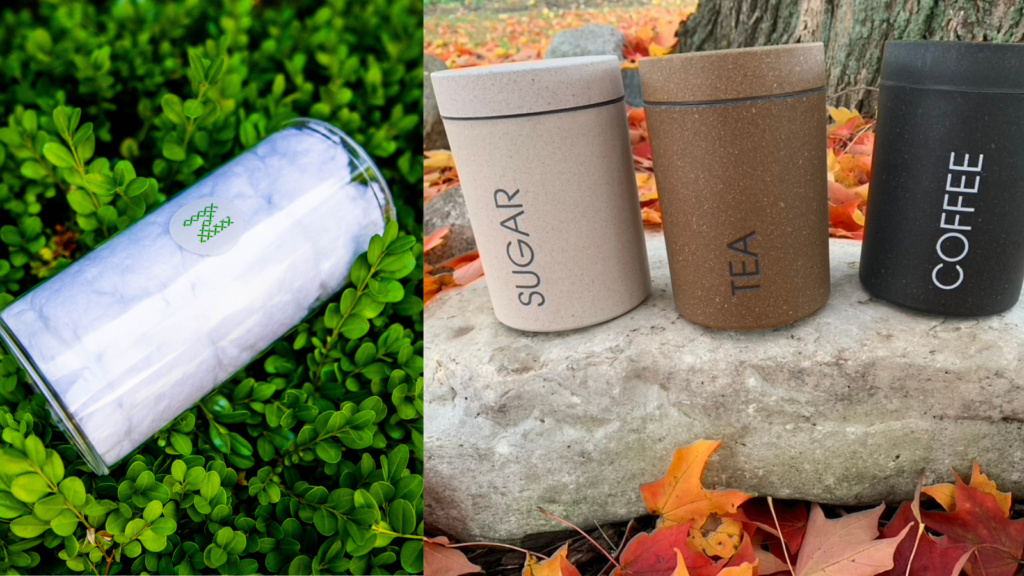
A hardworking number of Southeast Michigan manufacturing companies and hardware entrepreneurs are getting their start at the Centrepolis Accelerator, a nonprofit business facilitator providing access to key resources, a collaborative community, product development, and manufacturing experts with an impetus to keep manufacturing in Michigan. Launched in 2017 by Lawrence Tech, the City of Southfield, and the Michigan Economic Development Corp. (MEDC), the accelerator focuses largely on the areas of climatech, cleantech, and the circular economy. SBN Detroit spoke with two woman-owned sustainability businesses working with Centrepolis to gain insights on the whys and the hows regarding their industry choice, go-to-market objective, and their start-up paths and challenges. NexTiles, a Black-, woman-owned Detroit-based textile recycling, and secondary use company uses textile waste from Detroit’s automotive and apparel manufacturing industries to make eco-friendly building insulation that can reenter the circular economy at the end of its life. The founder and CEO is Madeline Miller. Pivot Materials is a millennial-woman-owned Detroit-based social impact business that specializes in providing sustainable biomaterials by upcycling agricultural waste, including bamboo fibers and rice and coffee hulls. The co-founder and CEO is Kylee Guenther. Q: How did the concept of your business come about? Miller: I was at the University of Miami doing my graduate studies in marine and atmospheric science. My undergrad was in environmental science, and I didn’t know exactly what I wanted to do with my education, but I started studying ocean plastics and then landfill waste and developed an understanding of manufacturing overconsumption and the waste it creates. I then started an internship with a New York-based textile recycling company and began brainstorming secondary uses for this textile waste. I came up with the insulation concept and it stuck. I’ve now been able to combine my Ph.D. research at the University of Michigan School for Environment and Sustainability around the energy burden with the corresponding demand for insulation. It’s been an awesome fit and direction for me. Guenther: My co-founder Raju Patil and I combined our childhood experiences into the mission of our business, Pivot Materials. I’m the second generation in my family to work in Michigan’s plastics industry. I grew up on the shop floor learning about plastics from the bottom up. I’m so proud of my dad and his career, which spanned about four decades in the plastics industry, but even as a kid I was mortified by the amount of waste he helped create. Raju grew up the son of a rice farmer in rural India and had similar feelings about the waste created by the agricultural industry. One-third of all black carbon emissions globally are created by crop burning. We thought we could work on both issues together so we started using agricultural waste to reduce plastic usage while also reducing the amount of agricultural waste that gets burned or sent to landfill. Q: Why sustainability? Miller: Textile waste consumption needs to be slowed drastically and the overwhelming amount of manufacturing waste in the atmosphere needs to be addressed. Our natural resources are being impacted and people are being impacted. They will continue to suffer if we don’t slow down. I want to change lives for Detroiters by using locally manufactured building insulation to create clean jobs, decrease the utility burden on families, increase diversity in the energy industry, divert textile waste from landfills, and contribute to the growth of the circular economy. Guenther: I often repeat in my head “be the change you want to see in this world,” and that’s driven my passion for sustainability. I think it’s absurd that only about 9% of all plastics created get recycled. I also know that plastics aren’t going anywhere. They’re too embedded in our lifestyles and plastic makes a lot of money for a lot of people. So, my passion is to transition away from as much plastic usage as well as other non-sustainable materials while also helping reduce the environmental impact of agricultural waste. Q: Please walk us through your start-up process and your work with Centrepolis. Miller: When I transitioned from Miami to Detroit and had the idea to start the business, I began working with TechTown Detroit. They familiarized me with customer discovery process and helped me to identify challenges and opportunities for my business. Centrepolis has been extremely helpful in the product development process. After we got over the hump of exactly what we wanted to make, Centrepolis came in and helped me identify a plethora of resources, including warehouse space, equipment, product treatment packaging, and marketing. Guenther: I’m really happy to see that Dan Radomski, executive director of Centrepolis started an accelerator specifically for product-based companies. This has been missing in the ecosystem. For us, I think the biggest benefit from Centrepolis has been working with our mentor and Expert-in-Residence, Richard Broo. Richard is a plastics industry veteran with about 40 years of experience in material sciences and project management. Sometimes we have an issue that we think is huge, and he can solve our problem in about two seconds and reassure us that it’s no big deal. This helps us save a lot of time as we grow our business, and it gives us someone to learn on. Q: Are you focused on business-to-business or business-to-consumer? Miller: I work with both. The first part of my business is waste collection and recycling. Here I focus on the automotive and textile industries, so this is B2B. A portion of that waste is then upcycled into eco-friendly insulation, a product I ultimately plan to sell to consumers. Guenther: We’re B2B. We sell our materials to brand owners and manufacturers who already use plastics or are looking to create a greener new product. Q: What are your biggest challenges? Miller: Communicating the value of our business to manufacturers is one of our biggest challenges. There is so much volume when it comes to waste, and it’s cheaper to take it to a landfill than to collect and process it into a new product. Some companies are at the
The Centrepolis Accelerator – Working to Grow Manufacturing and Bring Sustainable Opportunities to Michigan
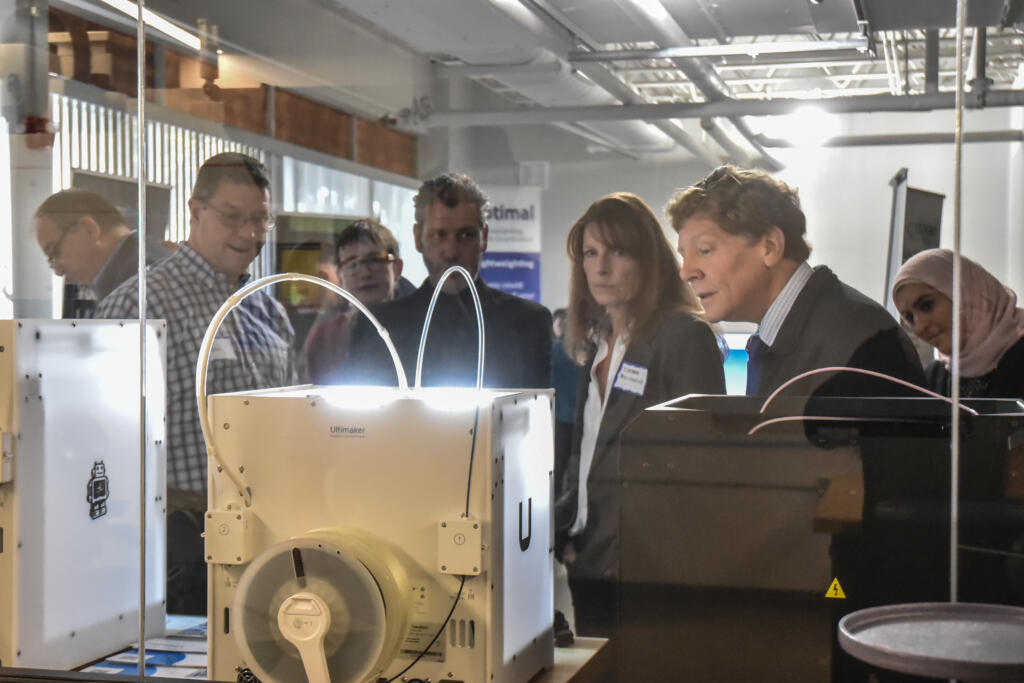
On the campus of Lawrence Technological University, the Centrepolis Accelerator is focused on the growth of Southeast Michigan’s small manufacturers and hardware entrepreneurs, largely in the areas of climatech, cleantech, and the circular economy. Centrepolis, a uniquely positioned nonprofit business facilitator, provides access to key resources, a collaborative community, product development, and manufacturing experts with an impetus to keep manufacturing in Michigan and thus bring Michigan manufacturers and companies new opportunities. Executive Director Dan Radomski previously held COO and chief strategy officer positions with Optimal Inc.– a Plymouth, Mich., based firm focused on product development, competitive benchmarking, and vehicle engineering. In a prior role as VP of industry and venture development at NextEnergy, Radomski led incubator services and market and technology analytic efforts to support the growth of early-stage and mature energy technology firms in areas such as wind, solar, advanced batteries, power electronics, vehicle electrification, smart grid, microgrid, natural gas, and energy efficiency. SBND spoke to him about the work Centrepolis is doing toward cleantech, climatech, and the circular economy as well as keeping development and manufacturing in Michigan. Q: What exactly is Centrepolis? A: The Centrepolis Accelerator is accelerating the growth of Southeast Michigan’s small manufacturers and hardware entrepreneurs with an emphasis on the circular economy. It’s the only incubator I’m aware of that offers in-house design, engineering, and prototype capabilities, plus access to funding, experts, customers, and strategic partnerships. If an inventor, start-up, small business, or manufacturer has an idea for a product, we are the place to come to get help in design, engineering, prototyping, testing, and prepping to manufacture. We work with many different individuals and entities. Some have engineering backgrounds and many do not. Designing out cost while ensuring durability and reliability in products are common challenges faced when bringing a new product to market. We harness the manufacturing expertise that’s so prevalent in Michigan and connect corporations and individuals to get more products developed and manufactured in Michigan. Q: How did Centrepolis come to be and what’s the impetus behind it? A: I grew up as a machinist working in my Dad’s machine shop. He and his friends made solid careers and good lives for their families as machinists. I’ve worked for small, midsized, and international product development firms and manufacturers throughout my career. Over the years I’ve seen a significant increase in outsourcing to China and started thinking about the future of my family and of other Michiganders. I felt like we needed a program to keep manufacturing in Southeast Michigan and help people who don’t have the engineering know-how. So, in 2017 we launched Centrepolis – the state’s only hardware accelerator program – with Lawrence Tech, the City of Southfield, and the Michigan Economic Development Corp. (MEDC). I also had some experience working with the Michigan Department of Environment, Great Lakes, and Energy(EGLE) so I took the idea to them. They said if the accelerator focused on cleantech hardware they would be interested in helping to fund it. I said we will focus not only on cleantech but also climatech and circular economy products, which came to be our C3 Accelerator program. Q: With whom do you work? A: This is another way we differ greatly from other incubator programs. Most incubators focus on helping start-ups only, but we offer services for all entrepreneurs whether they are an individual, a start-up, or established small businesses. Many would be surprised to know that 40% of our clients are established small businesses. We offer support on three levels essentially. First, we assist with customer discovery, competitive landscape research, and the securing of patents and trademarks. We also offer tactical support such as business strategy, and connections to customers, strategic partners, suppliers, and manufacturers. With some clients, we engage more deeply in the entire process, from investment to design to engineering to prototype to product launch. As we all know, there are solutions around sustainability globally, so we crowdsource and hunt down the best innovations in sustainable materials and recycling technologies and bring them into Michigan to partner with companies such as Whirlpool and Steelcase, among others. We have brought several companies with really interesting technologies focused on waste removal into Michigan to partner with manufacturers here. Q: What are some examples? A: Savormetrics is a great company in Canada. They are an award-winning AI-sensor company that provides Quality Assurance/Quality Controls systems to the food and agriculture industries to prevent food waste in food production, processing, and distribution. They have partnered with vertical farms and food processors here in Michigan and built solutions for vertical farms that increase yields by at least 30% and decrease operating costs by over 50%. Glacier is a very compelling recycling automation start-up in San Francisco that is developing a new robotic sorter for material recovery facilities that performs just as effectively as other robots, at a much lower cost and smaller footprint. We have facilitated funding for them through EGLE and partnerships with local material recovery facilities. Centrepolis also gained funding for local companies like Detect-It in Oak Park, which offers software that now helps to sort textiles such as end-of-life waste clothing and separate materials cotton from synthetic materials to improve recycling. Q: How are LTU students involved? A: We have five interns who are student workers. They help with business strategy as well as product design, engineering, and prototyping I can point to the Glacier recycling automation here. We are activating students now to help engineer and design a new end effector for robotic arms to help sort plastics for improved rates of recycling. Q: What does the future look like for Centrepolis? A: To continue getting more and more products made in Michigan. We currently have over three dozen products that have come out of Centrepolis that are completely made in Michigan. I’m also very proud of the fact that 366 of our clients now provide contracts with Michigan suppliers equating to over $24 million in business to the local supply chain. That’s an amazing amount of business and illustrates the economic multiplier of


